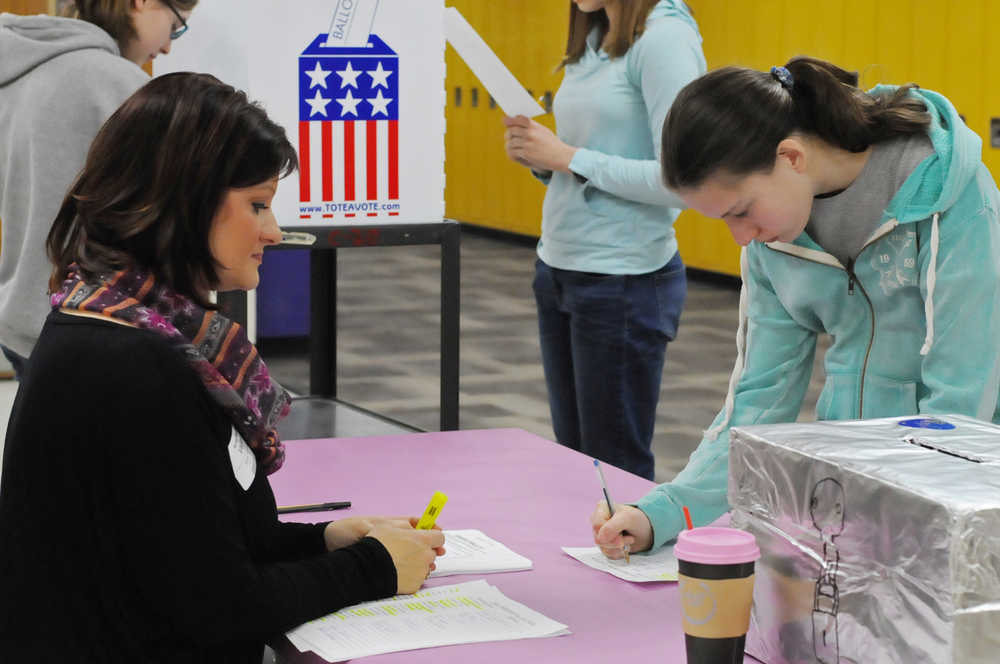Editor’s note: This story has been updated to correct information on the number of electoral votes for each state.
Kenai Middle School’s eighth-grade students got a chance to cast their ballots at the same time millions of Americans did during the general election Tuesday.
Throughout the day, students in Bob Summer’s U.S. History class ducked out in pairs to visit a table in the hallway and cast their votes for president, Alaska senator and Alaska congressman in a mock election. Complete with sample ballots and a booth for privacy, students cast their votes and dropped them into an aluminum foil-clad ballot box, which was delivered to the office after each period. Their results were almost a bellwether for Tuesday night’s results — by noon, it was clear that now president-elect Donald Trump had the lead.
Eighth grader Madeline Edelen said she cast her ballot for Trump because she agreed with his policies about the military. The process of learning how to vote had been informative for her, she said.
“It’s interesting — it’s a good example of what we’ll be doing when … we vote,” she said.
To add a little more flavor, it wasn’t an open election. Each class participated as part of the electoral college system in one of the “battleground states” of Florida, North Carolina, Nevada, Ohio or Iowa. Edelen’s class, held during the fourth class period of the day, was assigned as Iowa. The states were chosen based on the class size — the first-period class, the largest of the day, was assigned as Florida, the battleground state with the most electoral college votes, Summer explained to the fourth-hour class.
On the white board on the wall of his classroom, a U.S. map drawn in black and red detailed how many electoral college votes each state got. Summer prefaced the mock election with an explanation of how the process would go and quizzed the students on how many electoral college votes Alaska gets — three. Students were taught the electoral votes per state are the number of senators plus the number of representatives that state has in the house of representatives. So Vermont and Alaska have the same number.
Some students had taken the opportunity to make jokes and write in candidates, but they should take it seriously and not invalidate their ballots by voting for multiple candidates in the same election or otherwise voting incorrectly, he said.
“Use this time to get the feel for what it would be like in a real election,” he said.
As the results rolled in, they would be announced over the intercom. Other students were tracking the election throughout the day, although only the eighth-graders got to vote. During the passing periods, students from other classes stopped at the table to peer curiously at the ballot box or into the voting booth, asking about who was winning and whether they could vote, too.
Eighth grader Kiara Moses cast her ballot Tuesday too and said she felt like she’d learned enough about the process to be confident about the voting process. She said the process had been interesting and that she felt well prepared for it.
“I feel comfortable with it,” she said.
By the end of the day, the win was clear: Trump won every period, though the vote was divided in some of the class periods. Just like the statewide results, the students voted to keep Sen. Lisa Murkowski and Rep. Don Young in Washington, D.C. as well. Christie Ewing-Holmes, the school secretary, said when the staff announced the results at the end of the day, an audible cheer went up from the students.
Reach Elizabeth Earl at elizabeth.earl@peninsulaclarion.com.

